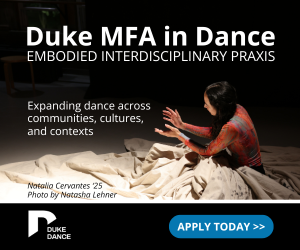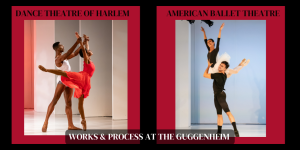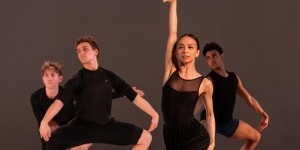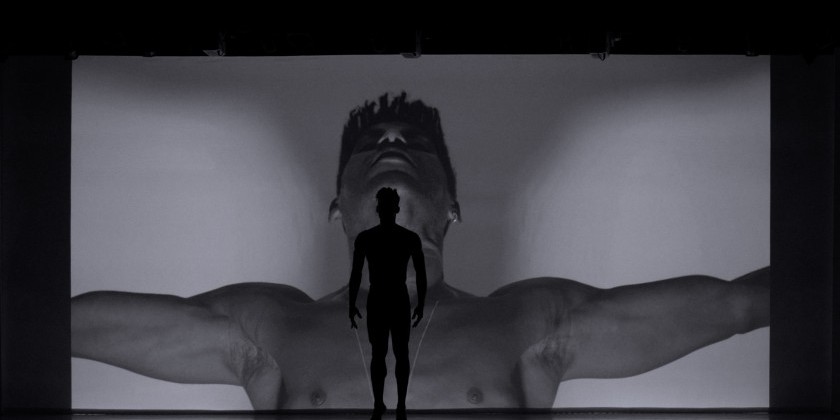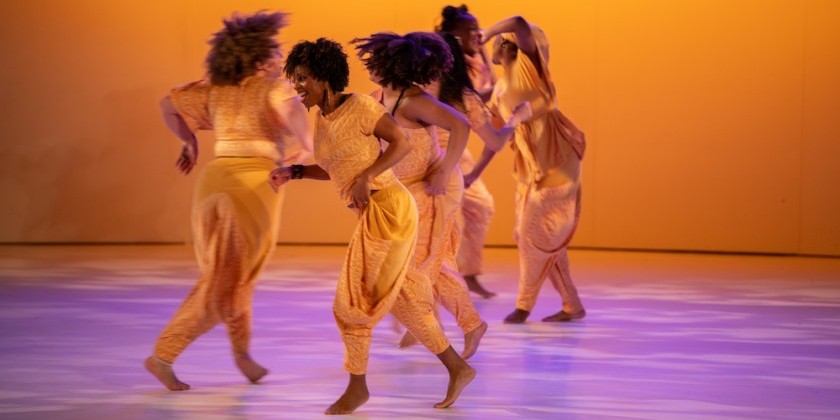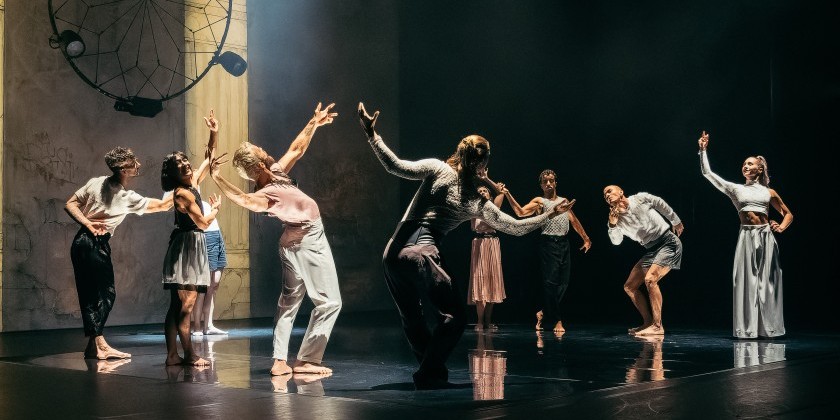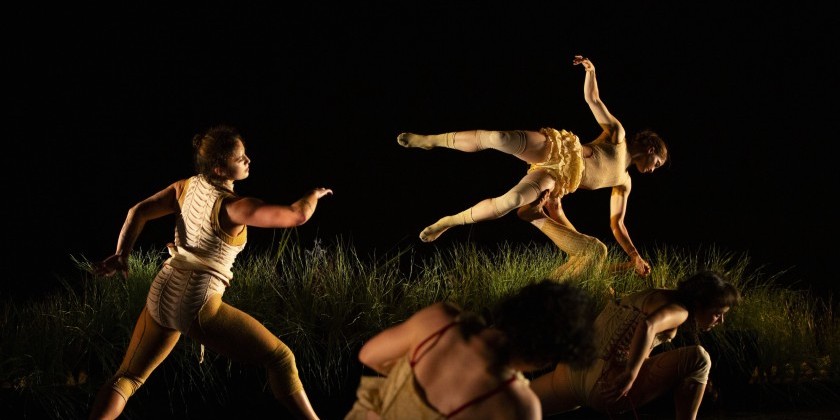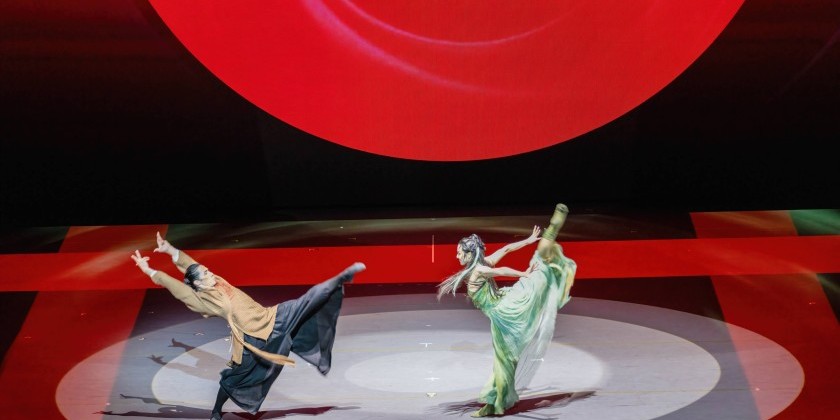IMPRESSIONS: Works & Process Presents "Lar Lubovitch: Art of the Solo"

Works & Process: Lar Lubovitch: Art of the Solo
Artistic Director (Lar Lubovitch Dance Company): Lar Lubovitch
Moderator: Adrian Danchig-Waring
Dancers: Craig D. Black Jr. (Hubbard Street Dance Chicago) and Ashley Kaylynn Green, Jacquelin Harris, Jesse Obremski (Alvin Ailey American Dance Theater)
Lighting Designer: Jack Mehler
Stage Manager: Leticia D. Baratta
Sunday, September 7, 2025
Peter B. Lewis Theater at the Guggenheim Museum
“One cannot describe dance in words, only dance can describe itself,” says choreographer Lar Lubovitch in conversation with New York City Ballet principal dancer Adrian Danchig-Waring.
On September 7th, Lubovitch presented excerpts of his work in two showings, both sold out through Works & Process at the Guggenheim. His solo creations are interspersed with discussion, providing an intimate glimpse into his creative mind.

The five solos span different moments of his career from 1972 to 2023, danced by artists from Alvin Ailey American Dance Theater and Hubbard Street Dance Chicago. While Lubovitch is forthright in explaining his process of recycling steps and reimagining music, he offers no explanation for the meaning behind his solos. “I make [dances] so that dancers can dance,” he says shamelessly to Danchig-Waring.
The evening opens with Cryptoglyph, danced by Ailey’s Jesse Obremski, who appears in a bright red outfit with a colorful patchwork of letters stitched all over his legs. As Obremski begins moving to the music, “Double Fiesta” by Meredith Monk, a vocal range of humming, laughing, and exclamations fills the theater. Relaxed and symmetrical, Obremski’s pace and dynamic seem to mirror the soundtrack. As the laughter brightens, he shimmies and grooves across the floor, and as the vocalist returns to humming, he moves through more recognizable dance shapes, such as a square, sustained passé or a floating développé a la seconde.

Immediately after, Lubovitch presents his oldest work of the evening, Scriabin Dances, originally choreographed in 1972 to piano works by Alexsandr Scriabin. Ailey’s Jacquelin Harris dances in a flowing ankle-length cream dress overlaid with black mesh. Barefoot and grounded, the audience hears Harris’ breath as she whisks through Scriabin’s “12 Etudes.”
Many moments of Lubovitch’s choreography reference codified modern dance techniques such as Horton and Graham: moving through tabletop and lateral positions, Harris eventually finds herself on the floor face up in what resembles a Graham “pleading” position. Her collarbone, exposed and vulnerable, evokes feelings of desperation. Scriabin Dances is a testimony not only to Harris’ endurance, but to her delivery and commitment to the challenge of endless jumps and extensions drawn and sequenced by Lubovitch.

Switching from modern dance to contemporary jazz, Lubovitch offers three excerpts from Little Rhapsodies, set to Robert Schumann’s “Symphonic Etudes Opus 13.” Danced by Hubbard Street’s Craig D. Black Jr., upbeat piano accompanies his cheerful demeanor and fast footwork. In jazz pants and a relaxed white button-down, Black Jr. mimics some Balanchinian moments: jutting his hips forward, flexing his feet, and inverting his knees. Little Rhapsodies shows Lubovitch’s attention to every little movement, using music as his personal canvas and the dancer as his paint.
In his next work, It’s All Right With Me, originally created in 1994 to songs by Cole Porter, Lubovitch switches musical gears yet again, proving his movement can adapt to just about any genre imaginable. Ailey’s Ashley Kaylynn Green contains and releases energy in her joints, oscillating between a relaxed, ragdoll laxity in her neck and hips and strong, textured floorwork. Green eats up the entire space of the stage; no corner of the floor remains empty as she engages with the audience with distinct confidence, at once flamboyant and secretive.

Lubovitch’s closing work, Desire, was commissioned by Works & Process and created in their 2023 LaunchPAD residency. Set to music by Reynaldo Hahn, Obremski dances the work, although the solo was choreographed on Danchig-Waring prior to an injury. Desire was originally created for film, and is here adapted for the stage. Obremski, in a Renaissance-style coat with a ruffled cream top and gray trousers, tenderly executes Lubovitch’s choreography with fragility and abandon. The movement, while structured and dynamic, seems to crumble at a moment’s notice, as if Obremski’s legs, spine, or feet have given out. He descends to the floor, his legs writing cursive as operatic notes ring out over piano chords. “Desire is the source of all suffering, but can never be satisfied,” says Lubovitch of the work, “Nothing is yours forever.”

Across these five solos, Lubovitch accentuates how music impacts the story of his work and the dancer performing the piece. In each piece of music, he wields energy, time, accumulation, and climax to make space for human emotion in every step along the way. The choreography communicates messages beyond the boundary of human language to offer personal and daring statements on what dance can mean. As he’s progressed in his expansive career, producing over 120 dances, Lubovitch also reveals his art of using past phrases to place steps into new context.
“What you see is what they mean,” he says, in reference to his solos. The art of dancing the solo is not an act that inflicts pressure on the performer — it is rather a demonstration of how the moving artist can fully embody the music they’re dancing to. For Lubovitch, the dancer is the music, and the music is the story.




